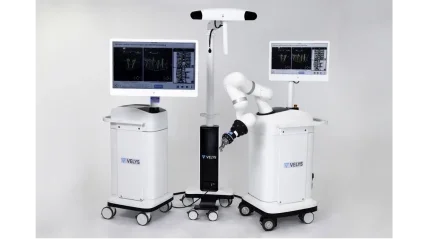
DePuy Synthes, the orthopaedics company of US drugmaker Johnson & Johnson (J&J), has launched the Velys Active Robotic-Assisted System (Velys Spine).
Developed in collaboration with eCential Robotics, Velys Spine is a unique dual-use robotics and standalone navigation platform.
The system received the US Food and Drug Administration (FDA) 510(k) approval for use in spinal fusion procedures in the cervical, thoracolumbar, and sacroiliac spine.
Its dual-use feature indicates both a standalone navigation and an active robotics platform and facilitates surgeon’ flexibility in their approach and plans.
DePuy Synthes said the surgical navigation platform will become part of its Velys Enabling Technologies Portfolio and integrate with existing J&J MedTech Spine products.
DePuy Synthes Group chair Aldo Denti said: “We are shaping the next frontier of orthopaedic innovation with a relentless focus on digital advancements and excellence in the field of surgical robotics and navigation.
“Our dedication extends to enhancing patient care through significant strides in spine surgery.
“This is a major step in growing our Velys Portfolio and in our commitment to supporting spine surgeons and their patients with advanced tools.”
According to the company, active robotics allow for surgical guidance customised to surgeon preference, which is expected to establish a new standard in spine surgical care.
Velys Spine system is designed to address the uniquely complex needs of spine surgeons.
The system offers a customisable experience with pathology-specific workflows, supported by Velys Adaptive Tracking Technology and Velys Trajectory Assistance.
DePuy Synthes said the system will be used with its core Spine portfolio of products.
The products include the TriALTIS Spine System and Navigation Enabled Instruments, the Symphony Occipito-Cervico-Thoracic (OCT) System, Viper Prime System and Expedium Verse Systems.
DePuy Synthes spine worldwide president Russell Powers said: “Today’s landscape of enabling technologies features first-generation robotics systems that may face challenges in adapting to individual surgeon needs.
“We recognise the urgent need for innovative solutions that offer new ways to engage with enabling technologies, returning control to surgeon’s hands.
“We believe that the unique features and capabilities of active robotics technology will set a new standard in surgical care for spine patients everywhere.”






